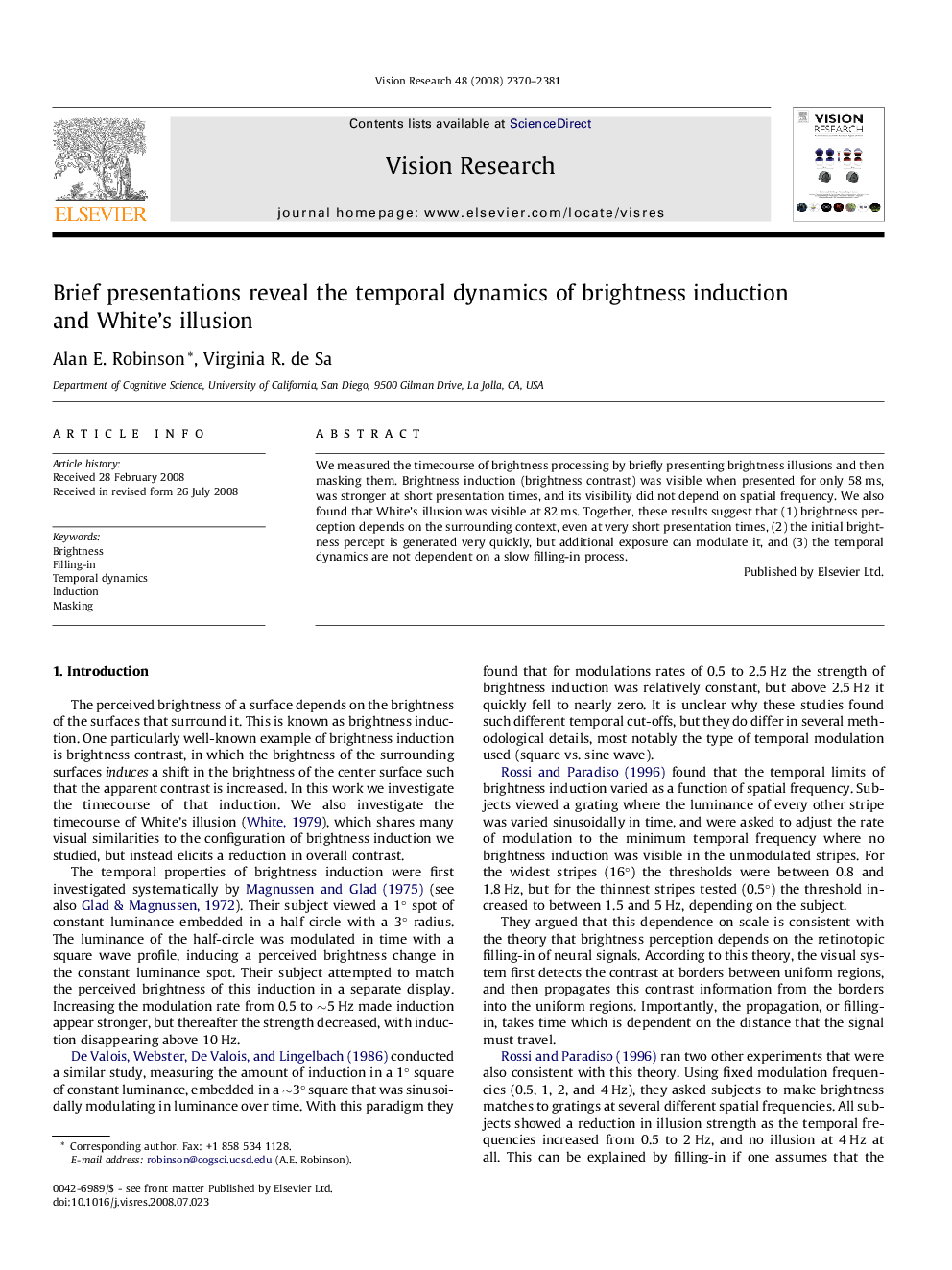| Article ID | Journal | Published Year | Pages | File Type |
|---|---|---|---|---|
| 4034943 | Vision Research | 2008 | 12 Pages |
Abstract
We measured the timecourse of brightness processing by briefly presenting brightness illusions and then masking them. Brightness induction (brightness contrast) was visible when presented for only 58 ms, was stronger at short presentation times, and its visibility did not depend on spatial frequency. We also found that White’s illusion was visible at 82 ms. Together, these results suggest that (1) brightness perception depends on the surrounding context, even at very short presentation times, (2) the initial brightness percept is generated very quickly, but additional exposure can modulate it, and (3) the temporal dynamics are not dependent on a slow filling-in process.
Related Topics
Life Sciences
Neuroscience
Sensory Systems
Authors
Alan E. Robinson, Virginia R. de Sa,
